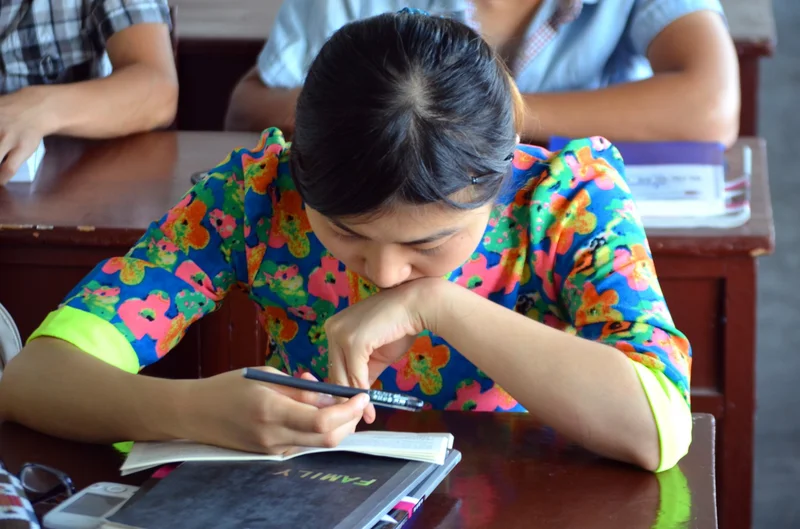Real-Time BNB Signal Analytics
Real-Time BNB Signal Analytics
The New Student Loan Rule Isn't About Debt—It's About Control
The Department of Education just finalized a 185-page rule that fundamentally re-engineers the Public Service Loan Forgiveness program, or PSLF. The official narrative is one of fiscal prudence and legal hygiene. The administration says it’s simply ensuring taxpayer funds don’t subsidize organizations with a “substantial illegal purpose.” On the surface, who could argue with that?
But when you strip away the press release language, you find a mechanism that has little to do with fiscal oversight and everything to do with executive branch overreach. This isn’t an accounting update. It’s the weaponization of a financial benefits program.
The rule, effective July 1, 2026, grants the Secretary of Education the power to disqualify an employer from PSLF eligibility. This means that if you’re a teacher, a social worker, or a doctor at a nonprofit, your path to having your federal student loans forgiven could be severed overnight because of your employer’s activities. The targeted actions are politically charged: aiding undocumented immigrants, providing gender-affirming care for minors (which the rule text labels “chemical and surgical castration”), or engaging in certain types of public protest.
The impact isn’t retroactive; payments you’ve already made still count. But for someone eight years into their ten-year commitment, the sudden disqualification of their employer renders the last two years of their financial planning moot. Their path to loan forgiveness student loans is simply gone.
The core of this new mechanism isn’t the list of prohibited activities. It’s the standard of proof required to act. The Education Secretary can disqualify an organization based on a court ruling, a legal settlement, or—and this is the critical part—an independent determination based on a “preponderance of the evidence.”
Let’s be precise about what that means. “Preponderance of the evidence” is a legal standard used in civil court cases. It means it is more likely than not (think 50.1% certainty) that a claim is true. It is a significantly lower bar than the “beyond a reasonable doubt” standard required for criminal convictions. I’ve reviewed regulatory frameworks for years, and embedding such a low, subjective evidentiary standard directly into a financial benefits program is a notable deviation. It effectively allows a political appointee to make a quasi-judicial finding without a court, a judge, or a jury.

This transforms the PSLF program from a straightforward financial incentive into a behavioral contract with vague, politically malleable terms. It’s like getting a mortgage where the bank can retroactively change your interest rate if they disapprove of who you invite over for dinner. The original deal—120 payments in public service for student loan forgiveness—is now subject to a new, ambiguous morality clause controlled by the executive branch.
The administration projects this will affect fewer than 10 organizations per year. This is a curious forecast. How does one quantify the future application of a discretionary power? The number feels designed to be reassuringly small, but it’s a political estimate, not a statistical one. The real question isn’t how many employers will be kicked out, but how many will self-censor their activities to avoid being targeted? What is the chilling effect on a public health clinic in a state where gender-affirming care is legal, but politically toxic? Or an immigrant aid group operating in a legal gray area?
This rule change executes a subtle but significant risk transfer. The financial and career risk that was once shouldered by the student loan borrower alone—the risk of taking a lower-paying public service job—is now shared by their employer. Nonprofits in fields deemed controversial must now weigh their mission against the financial well-being of their employees. Can they afford to attract talent if the promise of PSLF, a key recruitment tool, is suddenly unreliable?
The online discourse, a useful if imperfect anecdotal data set, reflects this schism. You have analysts like Preston Cooper at AEI suggesting the rule is “fine” because it’s narrowly defined. On the other side, you have organizations like the American Academy of Family Physicians expressing alarm that it “undermines a vital pathway” for doctors in underserved communities. The discrepancy in these views isn’t about the facts; it’s about the interpretation of risk. One side sees a scalpel for excising "crimebags"; the other sees a cudgel that can be swung at will.
The total federal student loan portfolio is massive, around $1.7 trillion—or, to be more exact, a bit below that since the resumption of payments. The PSLF program represents a small fraction of that total. So why focus so much administrative energy here? Because it’s not about the money.
This rule creates a powerful precedent. It establishes that a federal benefits program, created by Congress with a specific intent (to encourage public service), can be repurposed by the executive branch as a tool for ideological enforcement. It bypasses the legislature to punish or reward behavior that a particular administration finds desirable or undesirable. That’s a far more valuable asset than any marginal savings on student loan forgiveness. The goal isn’t just to stop subsidizing certain nonprofits; it’s to build a system that can be used to influence the nonprofit sector as a whole.
When you analyze this rule, the numbers about debt and borrowers are a distraction. The core transaction here isn’t financial; it’s political. The administration is trading a clear, legislated public benefit for discretionary executive power. It’s a quiet, bureaucratic maneuver that fundamentally alters the relationship between the state, the nonprofit sector, and the millions of Americans who chose public service. The long-term cost of that trade is far higher than any student loan balance.